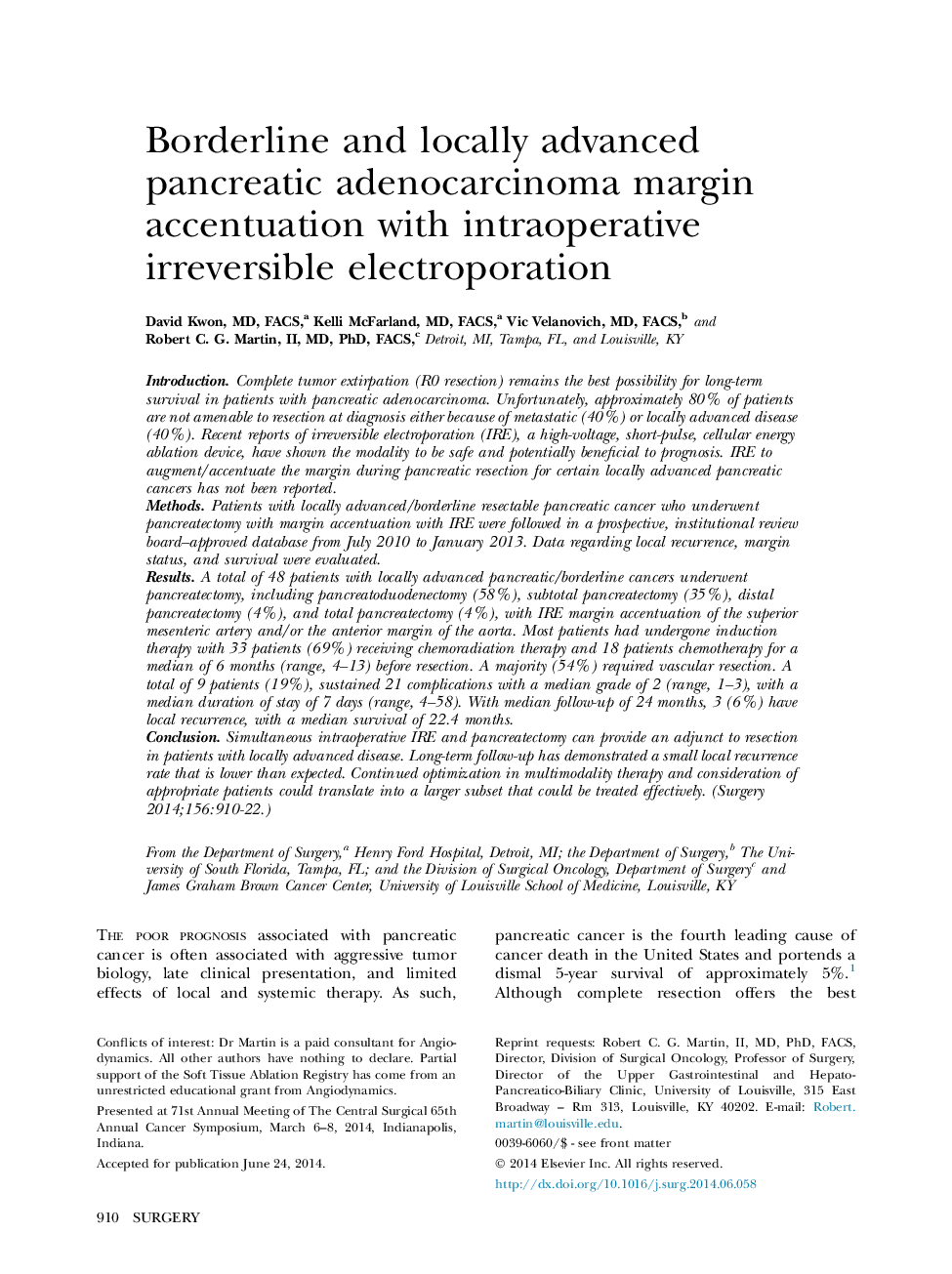| Article ID | Journal | Published Year | Pages | File Type |
|---|---|---|---|---|
| 4307641 | Surgery | 2014 | 13 Pages |
IntroductionComplete tumor extirpation (R0 resection) remains the best possibility for long-term survival in patients with pancreatic adenocarcinoma. Unfortunately, approximately 80% of patients are not amenable to resection at diagnosis either because of metastatic (40%) or locally advanced disease (40%). Recent reports of irreversible electroporation (IRE), a high-voltage, short-pulse, cellular energy ablation device, have shown the modality to be safe and potentially beneficial to prognosis. IRE to augment/accentuate the margin during pancreatic resection for certain locally advanced pancreatic cancers has not been reported.MethodsPatients with locally advanced/borderline resectable pancreatic cancer who underwent pancreatectomy with margin accentuation with IRE were followed in a prospective, institutional review board–approved database from July 2010 to January 2013. Data regarding local recurrence, margin status, and survival were evaluated.ResultsA total of 48 patients with locally advanced pancreatic/borderline cancers underwent pancreatectomy, including pancreatoduodenectomy (58%), subtotal pancreatectomy (35%), distal pancreatectomy (4%), and total pancreatectomy (4%), with IRE margin accentuation of the superior mesenteric artery and/or the anterior margin of the aorta. Most patients had undergone induction therapy with 33 patients (69%) receiving chemoradiation therapy and 18 patients chemotherapy for a median of 6 months (range, 4–13) before resection. A majority (54%) required vascular resection. A total of 9 patients (19%), sustained 21 complications with a median grade of 2 (range, 1–3), with a median duration of stay of 7 days (range, 4–58). With median follow-up of 24 months, 3 (6%) have local recurrence, with a median survival of 22.4 months.ConclusionSimultaneous intraoperative IRE and pancreatectomy can provide an adjunct to resection in patients with locally advanced disease. Long-term follow-up has demonstrated a small local recurrence rate that is lower than expected. Continued optimization in multimodality therapy and consideration of appropriate patients could translate into a larger subset that could be treated effectively.
